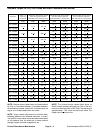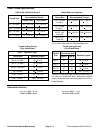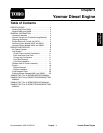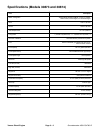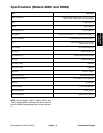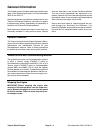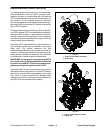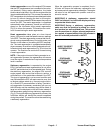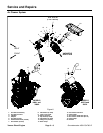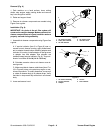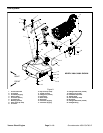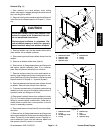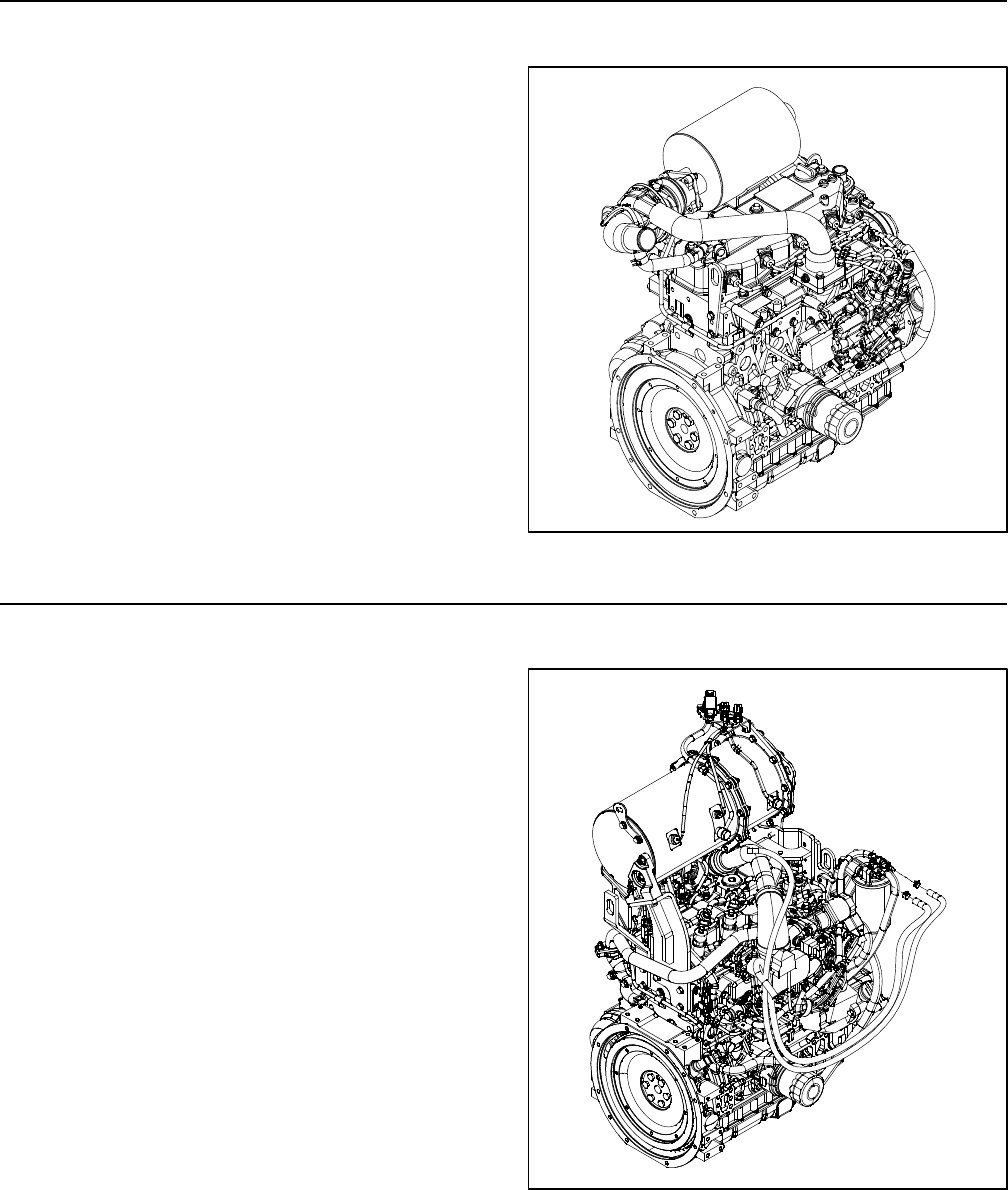
Groundsmaster 4500--D/4700--DPage 3 -- 6Yanmar Diesel Engine
Yanmar Engine: Models 30873 and 30874
The engine used on Groundsmaster models 30873 and
30874 is a Yanmar TNV Series, turbocharged, diesel
engine that complies with EPA interim Tier 4 emission
regulations. Engine features include an electronic con-
trol unit (ECU) controlled direct fuel injection and elec-
tronic governor. An air heater in the intake system is
used to assist starting the engine. Numerous engine
sensors are used to allow the engine electronic control
unit (ECU) to monitor and control engine operation for
optimum engine performance.
During machine operation, if an engine fault occurs, the
machine InfoCenter display can be used to identify the
fault. Also, theYanmar SMARTASSIST--Direct electron-
ic control diagnostics service system is available to con-
firm real--time engine running status and to offer timely
technical services.
Figure 3
Yanmar Engine: Models 30881 and 30882
The engine used on Groundsmaster models 30881 and
30882 is a Yanmar TNV Series, turbocharged, diesel
engine that complies with EPA Tier 4 emission regula-
tions. Engine features include an electronic control unit
(ECU) that controls a common rail fuel injection system
with direct injection, water--cooled exhaust gas recircu-
lation (EGR), anelectronic governor, an exhaust system
diesel oxidation catalyst (DOC) and an exhaust diesel
particulate filter (DPF) with active regeneration. Glow
plugs are used to assist starting the engine. Numerous
engine sensors are used to allow the engine ECU to
monitor and control engine operation for optimum en-
gine performance.
During machine operation, if an engine fault occurs, the
machine InfoCenter display can be used to identify the
fault. Also, theYanmar SMARTASSIST--Direct electron-
ic control diagnostics service system is available to con-
firm the real--time engine running status and to offer
timely technical services.
The exhaust system DPF has four (4) modes for main-
tenance: passive regeneration, assist regeneration, re-
set regeneration and stationary regeneration.
Passive regeneration is the primary mode regenera-
tion that occurs during normal operation. When the en-
gine is running at normal loads, the exhaust
temperature will keep the DPF above the minimum tem-
perature for regeneration so normal particulate matter
(PM) accumulation in the DPF is expected.
Figure 4



